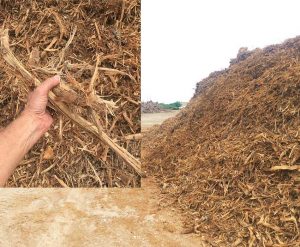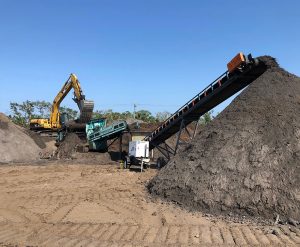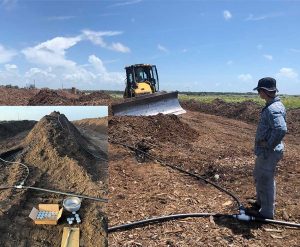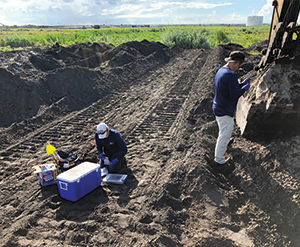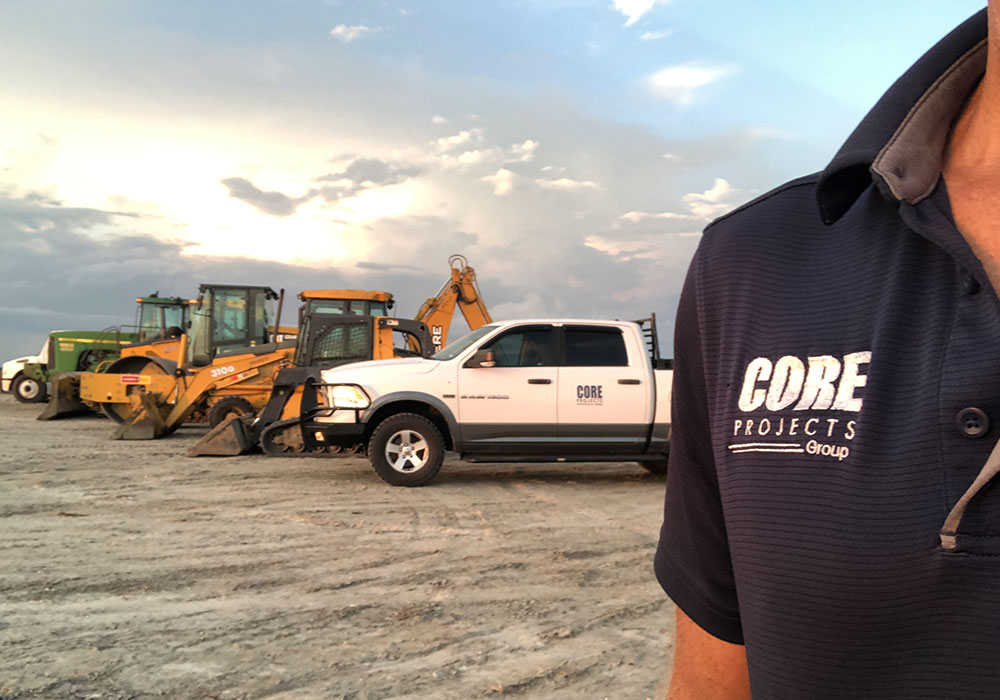Landfarm
Affected soil mixed with local tree mulch, sand, fertilizer and water effectively promotes natural bacteria to break down and digest hydrocarbons in soil.
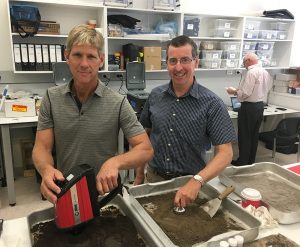
Core Projects Group was able to help with Hurricane Harvey cleanup by taking delivery of surplus mulch which saved FEMA thousands of miles of trucking and allowed beneficial re-use within the bioremediation landfarm
Mulch from Hurricane Harvey cleanup was from local trees and carried the correct bacteria and moisture content to promote bioremediation.
Heavy machinery was used for large scale mixing and stacking
Vibrating stacker was used to mix the soil, mulch and ash sand in a consistent ratio. Running the material through the sytem also introduced sufficient oxygen to start the bioremediation process.
Mixed mulch was placed in rows 250 yards long and 10’ high. A dozer with 6 way blade was used to turn the mix every 2 weeks to oxygenate.
The mulch/soil mix was activated and alive. When the rows were turned, steam was present in the fresh soil and it was warm to the touch, showing the bioremediation process was digesting the contaminates.
Texas A&M students took part in the process by monitoring fertilizer/water dosing and regular sampling.
Sample results were logged and a linear performance study was conducted showing very good results if the correct oxygen/moisture levels were maintained.
Final soil turn.
To check full depth TPH and moisture levels, the soil was turned and sampled. The subsoil was also sampled to check for contaminate migration. A bed of 100% mulch was spread before landfarm was established and provided an effective barrier to protect subsoil.
Validation Sampling
Once full depth remediation was confirmed, a thorough validation sample program tested the TPH levels in the soil confirming the remediation was complete.

